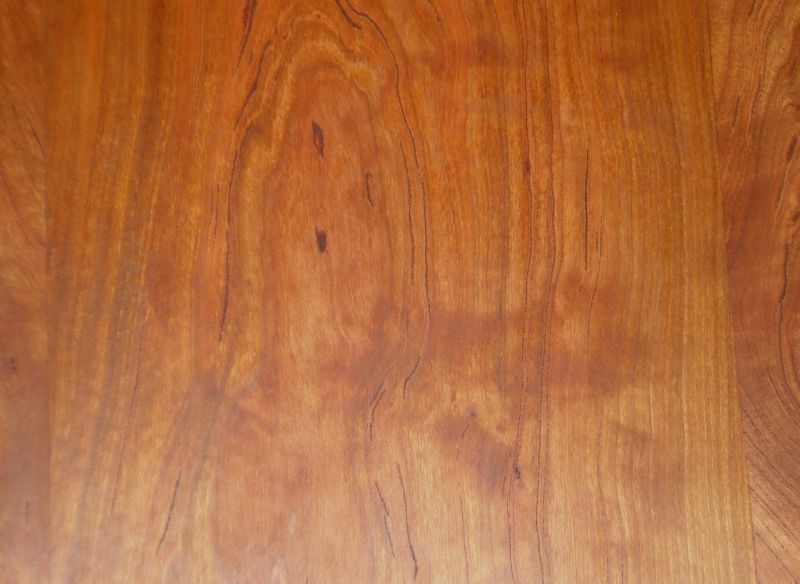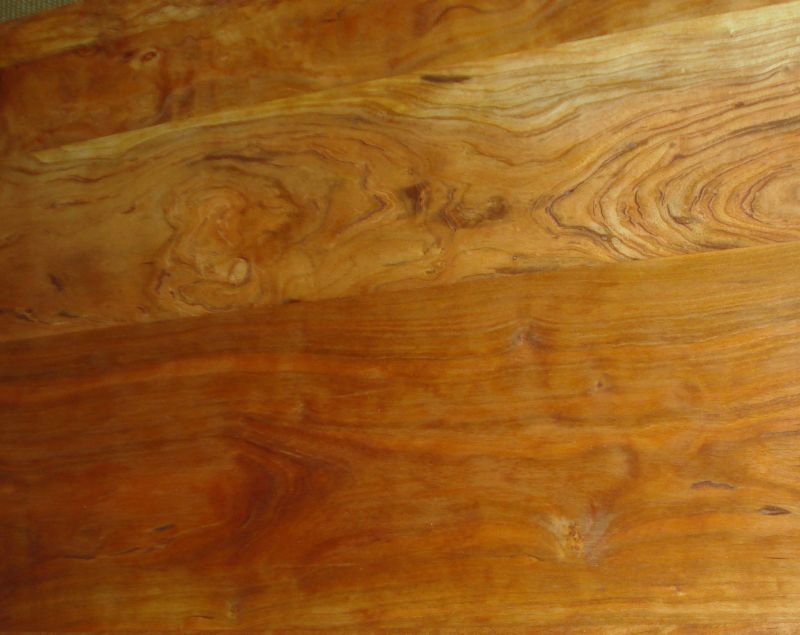Blotchiness on Finished Cherry
Cherry can look a little blotchy when freshly finished (part of the natural charm). A lot of it fades as the cherry darkens over time. February 8, 2008
Question
I just completed a coffee table with a gummy cherry wood. I sanded with 180 and 220 grit and finished with a hand scraper. However, the wood developed blotches on it and when I finished with a linseed/varnish mix, the blotchiness remained. I rarely work with cherry, so am curious if this is common and want to know what can be done.
Forum Responses
(Finishing Forum)
From contributor P:
It was blotchy before it was finished? Can you put up a picture? Cherry can have a good bit of color variation once it's been in the light for a while, especially if it's somewhat curly. I'm also not sure what you mean by "gummy." Do you mean it has a lot of pith pockets?
From the original questioner:
Below is a photo. The discoloration was there prior to finishing, which I've never experienced. The wood does have a lot of figure but these blotches are not consistent with the waviness of the figure on the apron of the table.

Click here for higher quality, full size image
Another part of the table. I enhanced the contrast a bit to show the blotches better.

Click here for higher quality, full size image
From contributor P:
Maybe I need glasses, but it looks normal to me. The top picture looks a bit like there was something on the wood or high spots that got burnt, but to me, it looks like normal cherry.
From contributor C:
Relax - you have a very nice piece of figured cherry there. Enjoy the play of the different figures. The interlocking grained areas is what I always strive to buy when purchasing cherry and all other figured woods. The piece looks wonderful.
From contributor K:
It's hard to say but it looks to me like it didn't get sanded well enough and the stain soaked in more in those areas. Maybe try raising the grain before the final sand. You say the blotchy areas were there. Maybe some oil or something got on it?
From contributor L:
What you see is normal for cherry... especially when you use an oil-base finish which accentuates the blotchiness. The contrast will reduce with time as the cherry ages and darkens.
From the original questioner:
Thanks all for the feedback. It needs at least two more coats of finish so I will use your suggestions. I know cherry darkens with age, so hopefully it will all even out in time.
From contributor A:
The blotchiness and variation you see is one of the difficulties in working with cherry finished without staining and/or toning. You can reduce this by carefully selecting the wood for highly visible surfaces (such as tops). Before fabricating the individual boards into a panel, wipe each one with mineral spirits, and you'll see those areas of interlocking grain that will blotch when finished. Don't use those pieces to fabricate tops, etc. (Sometimes you can't or won't want to, because the board is otherwise just so pretty.) If you work with cherry for awhile, you can learn to recognize this characteristic without resorting to wetting each piece. You can minimize blotching by washcoating to partially seal the wood, applying a stain, and then selectively toning, if necessary. You can use this to also minimize differences in sap and heartwood.
From the original questioner:
Thanks. I don't suppose there is a way to reduce the blotchiness now that I've oiled the top? I didn't stain, as I wanted the natural color of the cherry, but I'd be willing to sand down if I thought the top could be fixed. This is a very unique grouping of cherry that I selected specifically for this top.

